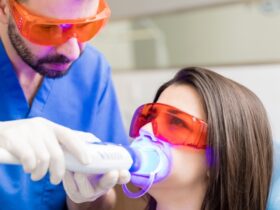In today’s fast-paced and rapidly advancing technological world, it’s no surprise that the field of dentistry is also experiencing a significant digital transformation. The emergence of digital dental labs has revolutionized the traditional methods of fabricating dental prosthetics, crowns, and implants. These labs utilize state-of-the-art equipment and software to design, manufacture, and customize dental restorations with utmost precision and efficiency. This shift towards digitization has not only enhanced the quality of dental care but also streamlined the entire process, saving time and resources for both dentists and patients. As a result, the digital frontier of dentistry is becoming an increasingly popular topic of discussion within the industry. In this article, we will delve deeper into the concept of digital dental labs, exploring their capabilities, benefits, and impact on the overall dental industry. We will also discuss the challenges and potential drawbacks associated with this new technology, as well as its potential for future advancements. So, buckle up and join us on this journey to discover how digital dental labs are shaping the future of dentistry.
Streamlining dental processes with technology.
With the advent of digital dental labs, the dental industry is experiencing a significant transformation. These labs leverage advanced technologies to streamline the various processes involved in dental treatments, making them more efficient and precise. Digital dental labs utilize computer-aided design and computer-aided manufacturing (CAD/CAM) systems to create digital impressions, design custom restorations, and fabricate dental prosthetics with unparalleled accuracy. This eliminates the need for traditional, time-consuming methods such as physical impressions and manual wax-ups, reducing turnaround times and enhancing patient satisfaction. Moreover, digital workflows enable seamless communication and collaboration between dentists, technicians, and patients, ensuring a smooth and coordinated treatment process. The integration of technology within dental labs is revolutionizing the industry, providing dentists with innovative tools and techniques to deliver better oral healthcare outcomes for their patients.
Advancements in digital dental restorations.
The rapid advancements in digital dental restorations have revolutionized the field of dentistry. Through the utilization of state-of-the-art technology, digital dental labs are able to achieve highly accurate and precise results in a fraction of the time compared to traditional methods. The introduction of intraoral scanners allows for the efficient capture of digital impressions, eliminating the discomfort and inconvenience associated with traditional physical impressions. CAD/CAM systems enable dental technicians to design and fabricate custom restorations with remarkable precision, ensuring optimal fit and aesthetics for patients. Additionally, the integration of 3D printing technology within the digital dental lab has opened up endless possibilities for the production of complex dental prosthetics with intricate details. These advancements not only enhance the quality of dental restorations but also improve patient experiences, making digital dental labs an essential component in shaping the future of the dental industry.
The impact of digital dentistry.
Digital dentistry has had a profound impact on the dental industry, with digital dental labs leading the way in shaping the future of dental care. By embracing cutting-edge technology, these labs have revolutionized the way dental restorations are created and delivered to patients. The use of digital tools and techniques has significantly improved the accuracy and precision of dental procedures, allowing for more predictable and successful outcomes. With digital impressions, patients no longer have to endure uncomfortable physical impressions, while CAD/CAM systems enable precise design and fabrication of custom restorations, ensuring optimal fit and aesthetics. Furthermore, the integration of 3D printing technology has expanded the possibilities for creating intricate and complex dental prosthetics. As a result, the impact of digital dentistry, spearheaded by digital dental labs, is transforming the dental industry by enhancing the quality of care and improving patient experiences.
In conclusion, the digital frontier of dentistry is rapidly advancing and reshaping the industry. Through the use of digital dental labs, providers and patients alike are benefiting from increased efficiency, accuracy, and convenience. As technology continues to evolve, we can expect to see even more innovations in the field of dentistry, ultimately improving the overall patient experience and outcomes. It is an exciting time to be a part of this ever-evolving industry and to witness the positive impact of digital advancements on dental care.







